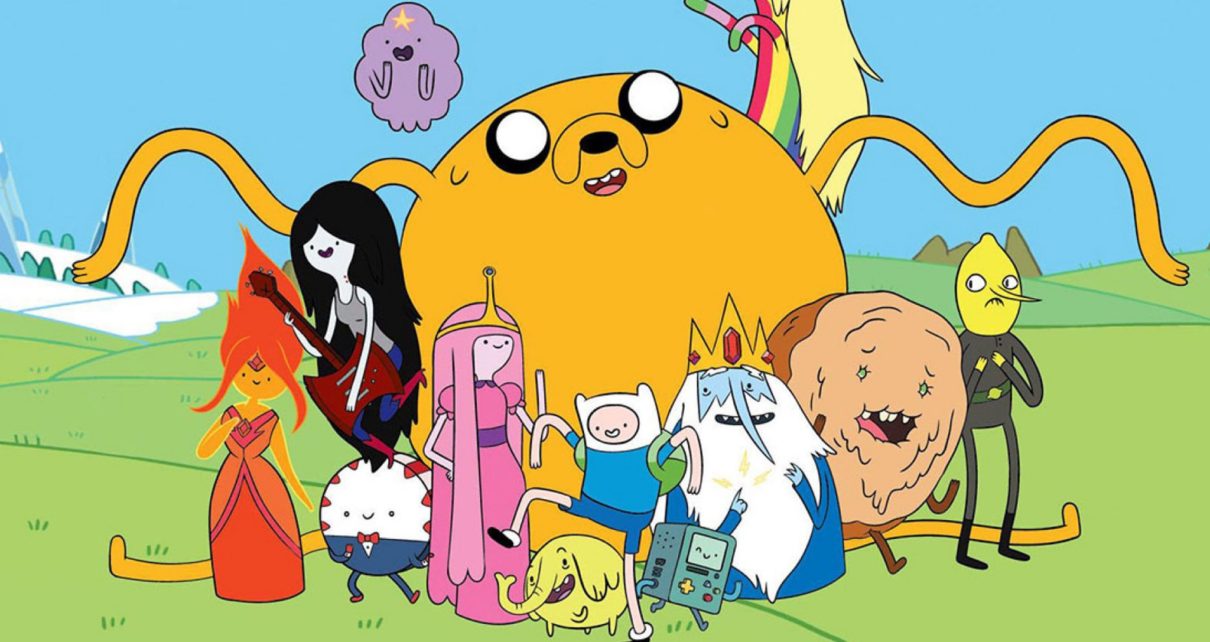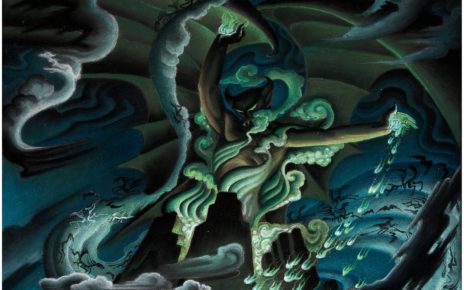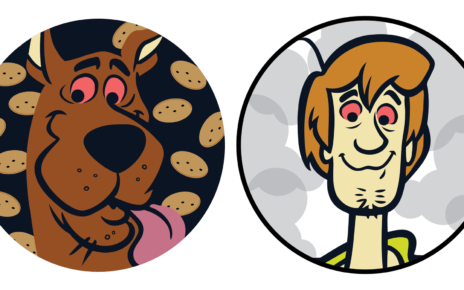
Time for One Last Adventure is our sendoff to Adventure Time.
Adventure Time wasn’t always an obvious surefire hit. Before the now-beloved, franchised, long-running show caught its lightning in a bottle, it was just one of creator Pendleton Ward’s ideas—and one that Fred Seibert, founder of Frederator and executive producer of the show, initially rejected.
“You never see the future,” he told The Dot and Line in an interview conducted earlier this year, before its final episode aired on September 3. Seibert eventually green-lit the short, but it took some convincing. “Just like the Beatles producer who originally turned them down before he made a left turn and went back, I turned down Adventure Time,” he said.
Frederator’s process and philosophy as a production company was and remains simple: make many, many short cartoons and see what cream rises to the top. Seibert’s colleagues Kevin Kolde and Eric Homan, vice presidents of production and development at Frederator, were the ones who helped him warm to the concept. “My point of view was: Well, you know, maybe they’re right, maybe it’s good, but you know, it’s one of 39,” he recalled. The rest is history; the idea turned into an initial short, which turned into a 283-episode series and one of Cartoon Network’s biggest hits ever.
Today, Seibert looks back on the show with pride and admiration for Ward’s creative vision, and what his colleagues initially saw from the jump: a magical world featuring true stories about growing up, set to a backdrop that audiences of all ages can appreciate. To Seibert, that’s because of Adventure Time’s endearing leads Finn and Jake, its use of the vocabulary of video games, the relationships between its vast supporting players, and Ward’s ability to world-build along his own set of rules.
So here’s Seibert, in his own words, expounding on those reasons the show was successful. We’ve added bolding for emphasis within, and lightly edited and condensed for clarity.
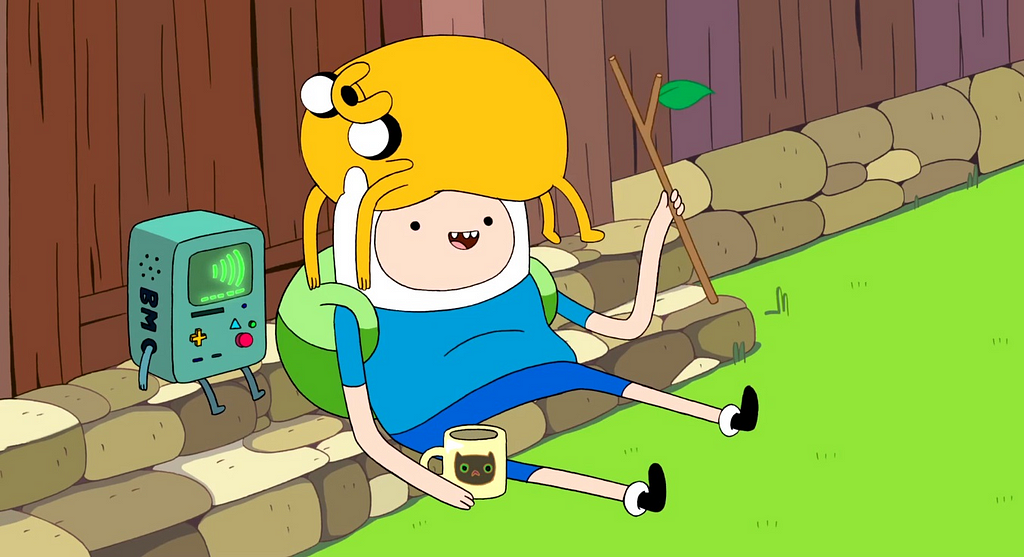
‘Adventure Time’ got you to love Jake and Finn from the jump
One of the things that [Ward] was able to do in that first short is do this weird little thing between Finn and Jake… Jake is om’ing. And I think [the name of Finn is] Pen in the short, right? [Pen is] downloading a dance into his head and all that.
Immediately a couple of things happen. You have these two characters here. Aside from what is wacky about them—the hat, and the way that the Jake looks—you feel affection toward them, immediately. You can tell that they like each other really quickly, and you don’t really know why, but you can feel why they like each other right away. And within 30 seconds. The hardest thing in any cartoon short—we’ve made 250 shorts over the years—is getting a sense of character quickly. Right? Ninety-nine percent of what we turn down that we don’t make is because of character. And here Pen, in seconds, establishes these two characters that are going to live with us now for nine seasons, who we desperately want to like and follow all the way along the way.
So, as soon as Kevin [Kolde, vice-president of production at Frederator,] said to me: “They talk the way real kids talk. They seem like they’re dealing with a bunch of non sequiturs, but it makes perfect sense to them.” I was like, Oh right. This is something that we haven’t seen before. That is where I started realizing [the show’s] video game vocabulary.

It creatively channeled the language of video games
I’ve said often that [Pen Ward] has internalized the vocabulary of video gaming…. But I’m talking about the way video gaming works, which he has brought to bear into filmmaking in a way that shields just how traditional his storytelling his. But [it has] a vocabulary that is recognized by this generation of video gamers in a way that the other people who like the show don’t even realize is there. I think of it as: you go into an episode of Adventure Time, and you have no idea what’s going on. It sort of starts in the middle. There’s a bunch of random things that happen. And at first you go: What? What is this thing? Where is it going? And all of a sudden, a couple of minutes in without realizing it, you’re in the middle of a story. It makes perfect sense all the way along the way. If you were to chart each episode the way a film theorist would, it hits every regular story beat you would want something to hit, but you don’t recognize it because of the way that they’ve been able to use all this randomness in the universe that comes out of video games.

It gave us a huge cast of dynamic characters
[Early on after the short was produced,] what we immediately did was say, “Hey Pen, would you think about this as a series? Do you think there’s a series in it?”
He goes, “Yeah, you know, I do think there’s a series in it.”
“What do you think it’s about?”
“You know, I think it’s kind of like Archie Comics.”
And all of a sudden we’re like, Uh-oh, our minds are blown: “What?”
He goes: “Well, you know, there’s Archie and Jughead and there’s Reggie and there’s Betty and there’s Veronica…”
What was really special about that is that usually what happens when you ask someone after a short that you like what [they]think more would be, they start telling you what the episodes would be like. And here’s Pen telling you that it’s about this group of characters who are together in an environment. They’re going to interact as characters together. All the other stuff—the land of Ooo, the apocalypse—all that stuff came afterwards, because he first was thinking about Archie and Riverdale. At that point, we don’t have to say anything. And in fact we don’t. Our job isn’t to say stuff, our job is not to develop. Our job is to locate filmmakers who have development in their soul and give them first the room that they need to do the development. And the other thing is to help them with any resources they might need to make the development come true. That’s what we did with Pen. Like really, what am I going to tell Pen Ward?
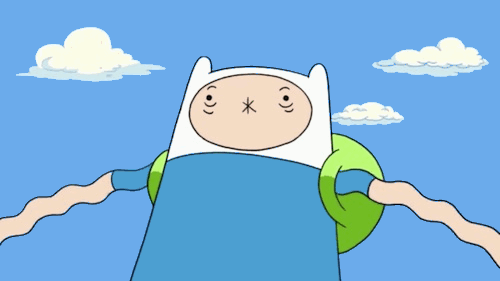
Its reality-bending universe paved the way for more
Most modern cartoon shows are a complete outgrowth of the 1940s and Looney Tunes. You can trace back an enormous amount of what goes on in the cartoon world to what happened in Looney Tunes….
Pen brought something to the table that I’ve had a few other shorts do—but certainly no other series—where his influences were a lot less Looney Tunes than the eras before Looney Tunes, not just the era after. The way that the tubular arms worked and the way that the scale was played with. In the post–Walt Disney animation universe (of which Looney Tunes was a direct outgrowth), everybody worked really, really hard with reality. [The idea was] “How can we create reality here, or an expanded reality?” One of the things you’ll hear about fromtraditional animators all the time is anatomy. Well, Pen messed with anatomy the way that Koko the Clown did [in] “Out of the Inkwell.” Or the Fleischers [did].
He played with the all the things that animation could be, not just some of the things. He wasn’t trying to recreate anything [in the real world]. He was trying to create a unique world where these characters existed with the laws that they established in their world. So if Finn became giant or flew through the sky or anything like that, that didn’t fit any rules. It didn’t fit the rules of kids’ TV. There are no parents of Finn. Like, what? Those things wouldn’t exist. The animation wouldn’t exist in any kind of traditional universe. Pen re-established all of his own rules of his universe, both visually and storytelling-wise.
Pen is the person who gave [creators who came out of the Adventure Time stable] permission to create unique universes. Because certainly the traditional executive cadre, including us [at Frederator], would be resistant to doing that. But they learned that they could visually create their own universes.
Natasha Allegri [creator of Bee and Puppycat]is allowed to do that because of what she went through in her years on Adventure Time, as was Rebecca [Sugar, creator of Steven Universe] as was Pat [McHale, creator of Over the Garden Wall]. Now, as is Ian [Jones-Quartey], you know, in his OK K.O.! All of those things came about because of that moment on Adventure Time where they realized that the rules are Adventure Time rules. Not Cartoon Network rules. Not Spongebob rules. Not Ren and Stimpy rules. Not Bugs Bunny rules or Mickey Mouse rules.

Thanks for reading The Dot and Line, where we talk about animation of all kinds. Don’t forget to for this article and follow us on Twitter and Facebook.


